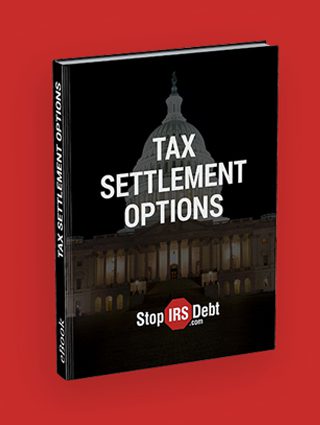- browse by category
- Audit Assistance
- Business and Taxes
- Celebrities in Tax Debt
- Cryptocurrency Taxes
- Economic News
- Foreign Banking
- Innocent Spouse
- IRS debt settlement
- IRS Headlines
- IRS Wage Garnishment
- Marriage & Divorce
- Payroll Tax
- Retirement
- Revenue Officers
- State Tax Headlines
- Stop IRS Debt
- Success Stories
- Tax and Politics
- Tax Attorney
- Tax Codes
- Tax Debt Help
- Tax Evasion
- Tax Levy
- Tax Lien
- Tax Payment Plans
- Tax Return Filing
- Tax Tips

Welcome back to Tax Liens 101!
We’re glad to have you with us in our two-part series as we cover all things IRS tax liens, from what tax liens are and how the IRS assesses them to how to get rid of them once at for all.
At StopIRSDebt.com, we believe the only way to fight back against tax debt, wage garnishments, and tax liens is with a complete and thorough understanding of how taxes work. And unfortunately, few people have a thorough understanding of many tax basics—which makes receiving a letter from the IRS that much scarier.
Yes, taxes can be scary, and an IRS tax lien that much scarier. So we’re here to use our experience as a full service tax consulting and mediation provider to provide you with the guidance and information you need.
With that in mind, let’s turn our attention to the topic at hand for part two of Tax Liens 101: How Do I Stop an IRS Tax Lien?
While IRS tax liens are serious business, they aren’t permanent—and there are a number of ways to stop and avoid them entirely.
(If you’re just joining us, you may find part one of this series particularly helpful for understanding what happens during an IRS tax lien. Take a moment to catch up, and we’ll wait for you right here!)
How to Get Rid of an IRS Tax Lien
We want to be extra clear: A tax lien doesn’t mean the IRS is going to come and take your car tomorrow.
However, it does open the door to a potential levy and seizure of your property down the line. So, if the IRS has filed a Notice of Federal Tax Lien, it’s time to get moving.
Here are the best ways to get rid (or lighten the burden) of an IRS Tax Lien:
1. Pay Your Debt.
The first and best way to get rid of a federal tax lien is by paying your tax debt in full.
It’s simple: The tax lien is only filed based on your tax debt, so eliminating the tax debt in full is the easiest and most direct way of stopping the lien. And for taxpayers facing smaller tax bills, paying their debt in full may actually be possible! Unfortunately, the reality is that many tax bills are simply large to pay off all at once—so enlisting a tax mediation firm that can negotiate with the IRS may be your best bet.
While paying your debt is the best way to get rid of a tax lien, there are numerous ways to reduce the impact of a lien. Note: They’re not always available to every taxpayer, but they can be a big help!
2. Discharge of Property
A discharge of property removes your IRS tax lien from a specific property. Typically, you’ll find this method most commonly used by property owners who plan to refinance or sell a property, such as a vacation home, in order to pay some of their tax debt.
You can learn more about it directly from the IRS.
3. Subordination
Subordination doesn’t remove the lien, but it does allow other creditors to return to the “front of the line”—ahead of the IRS. The Notice of Federal Tax Lien lets creditors know the government has a legal right to your property, which can make it harder for you to get a mortgage or loan. Subordination can help ease this burden.
Learn more about it in the above video!
4. Withdrawal
Successfully applying for a withdrawal will remove the Notice of Federal Tax Lien, but not the lien itself—so you’re still on the hook for the tax bill. So, as far as creditors and the public are concerned, the lien no longer exists, which can be beneficial for a bunch of financial reasons.
And yes, the IRS has a video for that. Check it out here.
Stop IRS Tax Liens in Their Tracks
The best way to stop an IRS tax lien is to avoid one entirely.
You can avoid an IRS tax lien by staying current and accurate with your tax returns. And should something slip through the cracks (It happens!), the next best way for you to avoid a tax lien being placed on your property is to be responsive.
If you receive a letter from the IRS, don’t let the stress of the situation overwhelm you into inactivity. Instead, enlist help from a professional who has experience dealing with tax liens. Who knows! You may find out your tax bill is actually lower than you thought. Or, you may simply be able to work out a payment plan and avoid your IRS tax lien being public knowledge in the first place.
In any case, we hope you’re leaving the Tax Liens 101 series more comfortable and confident in your understanding of tax liens than you started it.
Trust us. That can make all the difference.
Don’t forget to check out part one of our Tax Liens 101 series, “What Happens During an IRS Tax Lien?”
Leave Comments

Top Tax
secrets revealed
Sign up for our newsletter and be the first to find out when exciting IRS news happens. Yes, exciting. We're really into taxes.


